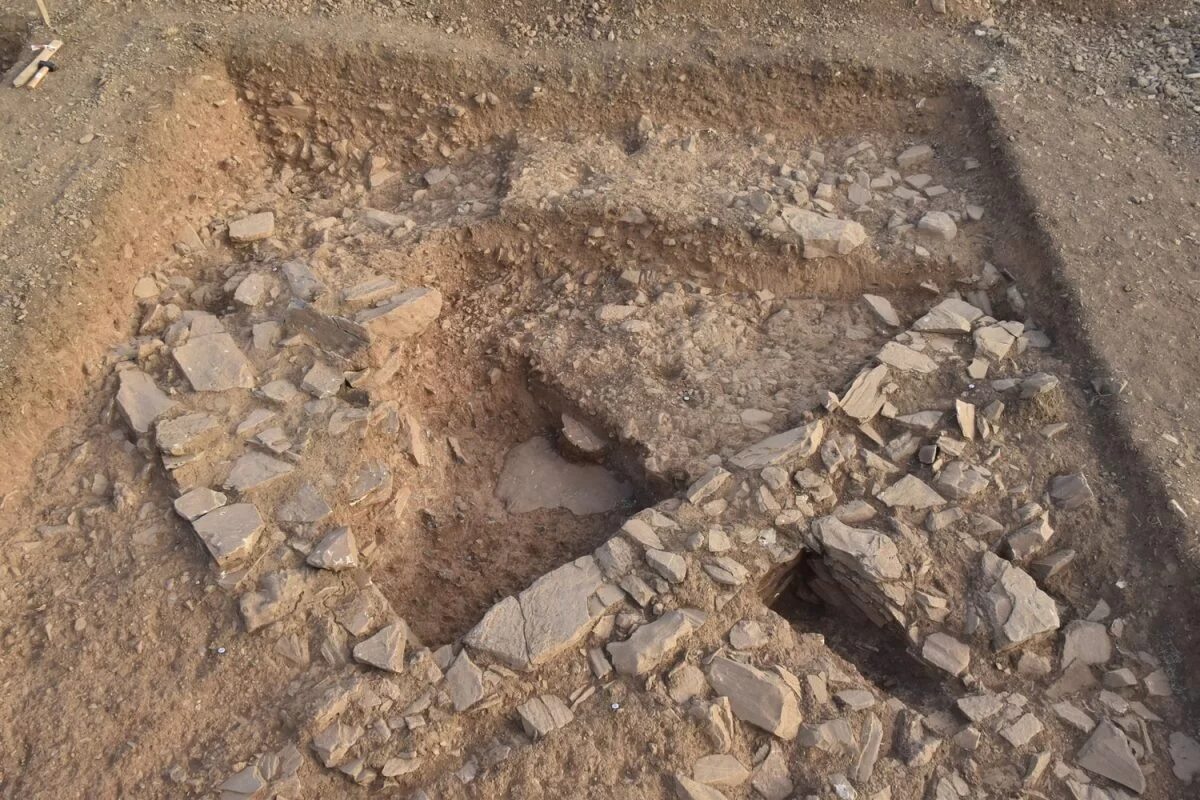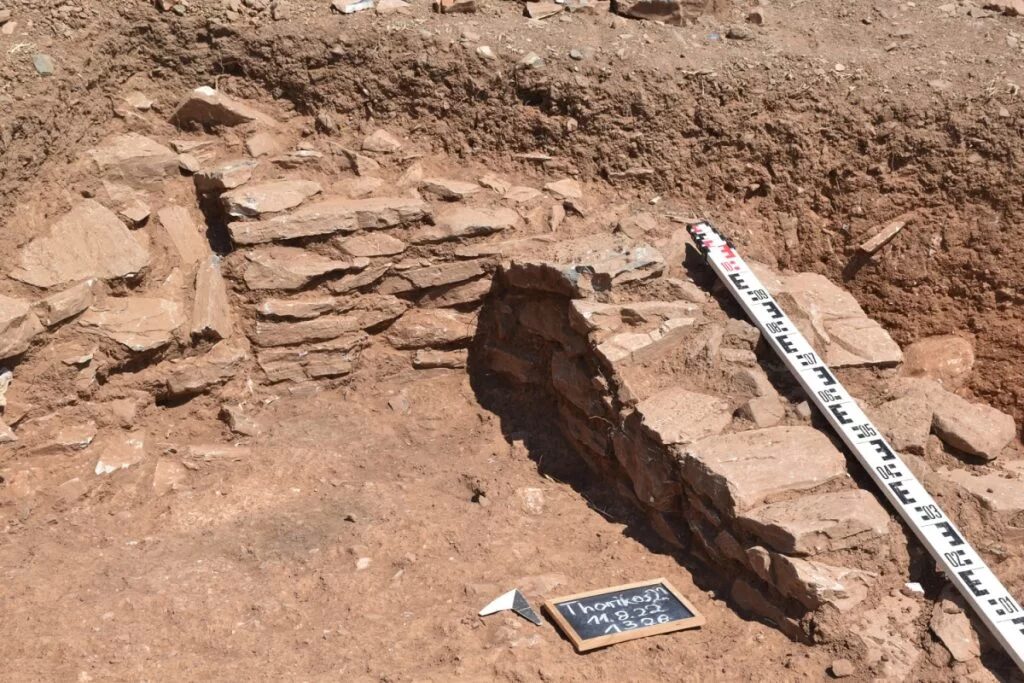
The ancient settlement is located in the area of ancient silver mining, 60 kilometers south of Athens. Here you can see Mycenaean dome tombs and a classic settlement with houses, production facilities, sanctuaries, the theater and burial sites. What is striking is the unprotected location just 20 meters above sea coast - from the sea, so there was apparently no danger at the time. Only in the course of the 8th Century BC the settlement activity shifted to the safe hill plateau, which is over 100 meters high. After geophysical investigations of the southeastern slope, the scientists found a grave from the 5th Century BC.
In 2019, a exposed corner of the wall initially indicated a classic grave building. "However, it turned out that there was no burial there before, but a building from the 10th to the 9th Century BC.", says Prof. Dr. Johannes Bergemann, director of the Archaeological Institute of the University of Göttingen. Last year, the scientists continued to research the expansion of the building, recognizing five to six rooms. In the largest room there were still numerous pebbles in the association, which indicate a cobbled courtyard. An analysis of inorganic and organic characteristics of the rock confirmed the use of around 950 to 825 BC.

With the funding received, this unique find is now to be completely excavated, archaeologically and scientifically examined and analyzed. The excavations will continue together with the University of Ghent ( Belgium ) in July / August 2023 and 2024.



What's with all the mindless finds.